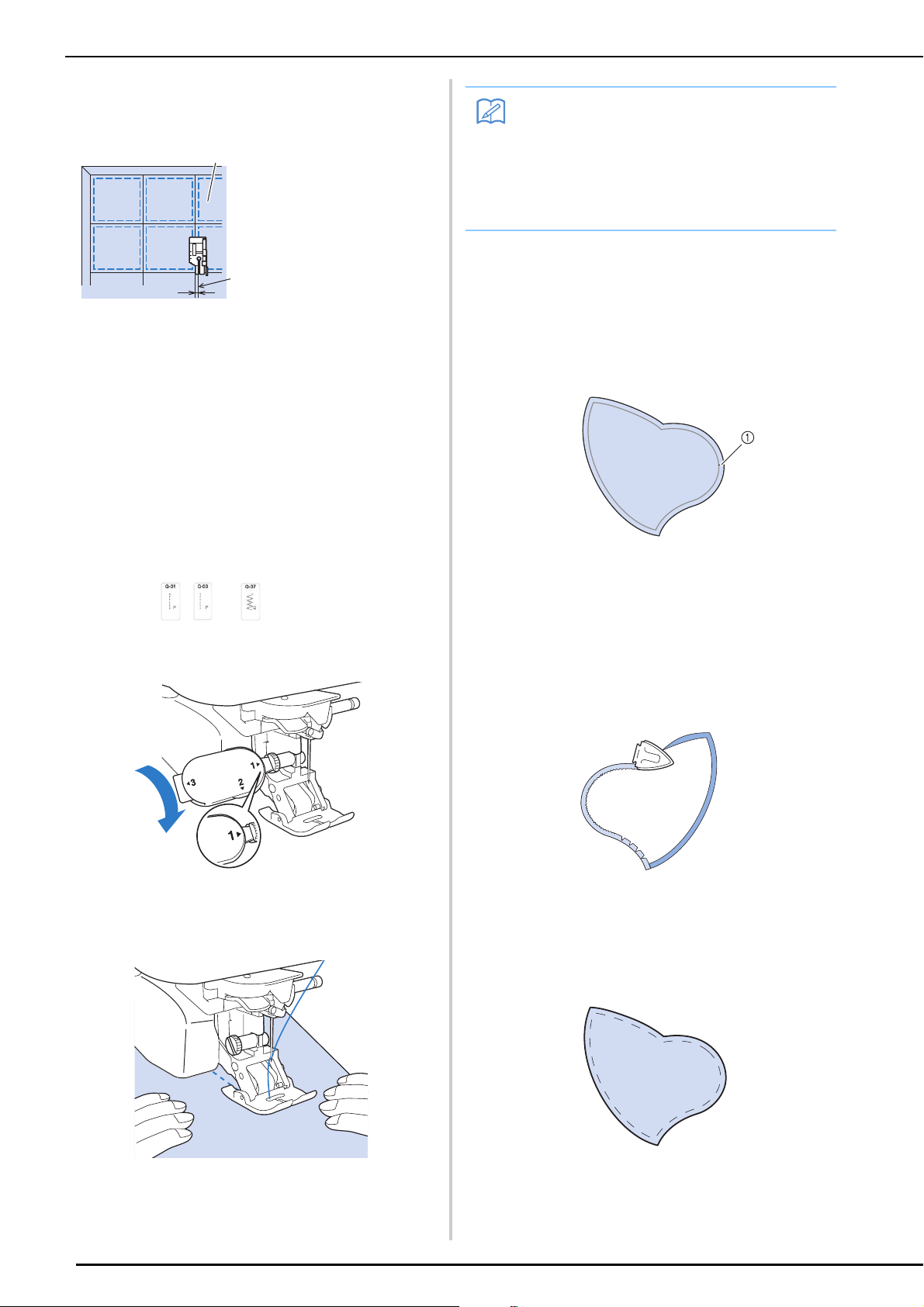Loading ...
Loading ...
Loading ...

SEWING THE STITCHES
126
Topstitching quilting, 1/8 inch
Sew with the edge of the fabric or seam aligned with
the left side of the presser foot's front section.
■ Quilting
Sewing the quilt top, batting, and backing together is
called quilting. You can sew the quilt with the dual
feed foot to keep the quilt top, batting, and backing
from sliding. The dual feed foot has a motorized belt
that moves together with the feed dogs in the needle
plate during sewing.
For straight line quilting, use the dual feed foot and
the straight stitch needle plate. Always select a
straight stitch (middle needle position) when using
the straight stitch needle plate.
a
Select , or .
b
Attach the dual feed foot (page 74).
c
Place one hand on each side of the presser
foot to hold the fabric secure while sewing.
■ Appliqué
a
Trace the pattern onto the appliqué fabric
and then cut around it, leaving a 3 to 5 mm
(approx. 1/8 to 3/16 inch) seam allowance.
a Seam allowance: 3 to 5 mm
(approx. 1/8 to 3/16 inch)
b
Place a piece of stabilizer cut to the finished
size of the appliqué design onto the fabric,
and then fold over the seam margin using
an iron. Clip curves when necessary.
c
Turn the appliqué over, and attach the
stabilizer with basting pins or a basting
stitch.
a Surface of fabric
b Seam
c 1/8 inch
a
b
c
Memo
• Sew at slow to medium speed.
• Always check to be sure that your quilting
surface is securely basted before beginning
to sew. Specialized machine quilt needles
and threads are also available for machine
quilting.
Loading ...
Loading ...
Loading ...